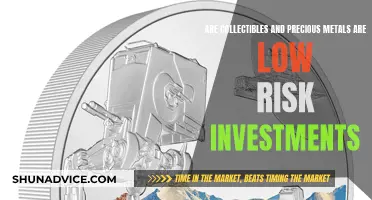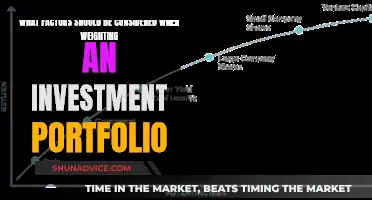
VTIP, or the Vanguard Short-Term Inflation-Protected Securities ETF, is a fund that invests in TIPS, or US Treasury Inflation-Protected Securities. It is considered a safe, stable, and low-risk investment option, particularly effective as an inflation hedge. The fund's performance is strongly correlated with inflation rates, with high inflation resulting in higher yields and returns. However, VTIP's returns are relatively low compared to other investments, and its performance depends on various economic factors.
| Characteristics | Values |
|---|---|
| Investment Thesis | Simple and effective low-risk inflation hedge |
| Investment Type | TIPS (US Treasury Inflation-Protected Securities) |
| Risk | Low |
| Returns | Low |
| Yield | 2.3% (as of 2021) |
| Performance | Outperformed bonds, treasuries, and investment-grade bonds in 2021 |
| Appropriate For | Investors looking for effective inflation hedges |
| Credit Risk | Nil |
| Interest Rate Risk | Very low |
| Price Volatility | Low |
| Best Time to Invest | When inflation is rising but interest rates are low |
What You'll Learn

VTIP's performance in a high-inflation environment
VTIP, or Vanguard Short-Term Inflation-Protected Securities ETF, is a fund that invests in short-term inflation-protected treasuries, which are considered some of the safest securities in the world. The fund's performance is strongly dependent on inflation.
VTIP's investment thesis is simple: it functions as an inflation hedge with safe, stable, and low-risk holdings. VTIP invests in TIPs, which see higher coupon payments when inflation rises. Thus, VTIP also sees higher coupon payments, yields, and returns when inflation is high. For example, in 2021, when inflation rose moderately over twelve months, VTIP's dividends grew by more than 50%.
VTIP's safe, stable, and low-risk holdings make it a very safe investment. However, this also means that it has low yields and returns. As of 2021, VTIP yields 2.3%, which is higher than average for bonds and treasuries but still quite low. If inflation remains elevated, VTIP's yield might grow, but it will decrease if inflation normalises.
VTIP has historically had low returns except during periods of high inflation. The fund value drops inversely to the yield. While VTIP pays an attractive yield, it has underperformed CPI inflation since its inception.
VTIP's most significant risk is the possibility of deflation or decreased inflation, which would lead to lower dividends and small capital losses as investors sell TIPs. However, TIPs themselves do not see losses from deflation or decreased inflation; possible losses would come from market movements. Overall, VTIP is a good choice for investors seeking an effective inflation hedge and a low-risk investment.
Smart Investing: Earning $500 with a Simple Strategy
You may want to see also

How VTIP compares to other investments
VTIP, or Vanguard Short-Term Inflation-Protected Securities, is an exchange-traded fund (ETF) that invests in TIPS, or US Treasury Inflation-Protected Securities. TIPS are considered some of the safest investments in the world, and VTIP's holdings are stable and low-risk. As such, VTIP is also considered a safe investment.
VTIP's investment thesis is simple: it functions as an inflation hedge, investing in short-term inflation-protected treasuries. When inflation rises, VTIP sees higher coupon payments, yields, and returns. Thus, VTIP's performance is strongly dependent on inflation.
VTIP has outperformed bonds, treasuries, and investment-grade bonds in the past twelve months but underperformed high-yield corporate bonds. Its current yield is 2.86%, which is quite low and expected to decrease once inflation normalizes. Compared to other investments, VTIP has low returns, except during periods of high inflation and rising interest rates.
VTIP's safe and stable nature makes it a good choice for risk-averse investors and retirees. However, it may not be the best option for those seeking high returns or investing for the long term. For example, BND may be a better alternative for long-term holding, as it could perform better over multiple bull and bear markets.
Overall, VTIP is a safe and effective investment, particularly during times of high inflation and low-interest rates. However, it is important to consider the current economic context and your investment goals when deciding whether to invest in VTIP or alternative options.
Investing in NYSE from India: A Comprehensive Guide
You may want to see also

The risks of investing in VTIP
While VTIP is generally considered a safe investment, there are still some risks to be aware of before investing. Here are some paragraphs detailing the risks of investing in VTIP:
VTIP, or the Vanguard Short-Term Inflation-Protected Securities ETF, is considered a relatively safe investment due to its low-risk holdings and stable performance. However, one of the main risks associated with VTIP is the possibility of a decline in inflation. VTIP's returns are strongly dependent on inflation rates, and in the event of deflation or significantly lower inflation, VTIP's returns may decrease. This is because VTIP invests in TIPS (Treasury Inflation-Protected Securities), which are designed to provide protection against inflation. When inflation rises, VTIP's underlying holdings see higher coupon payments, resulting in higher dividends for shareholders. However, if inflation collapses, these dividends may decrease, leading to potential capital losses as investors sell TIPs.
Another risk to consider is the impact of interest rates on VTIP's performance. As a bond fund, VTIP is affected by changes in interest rates. An increase in interest rates can cause a decrease in the price of VTIP, as it does with other bond funds. Therefore, it is important to understand the relationship between duration and interest rate risk before investing in VTIP or any other bond fund. The best time to invest in VTIP is when inflation is rising but interest rates are still low.
Additionally, while VTIP has historically provided low returns, there is a possibility that these returns may drop even lower. VTIP's yield is expected to decrease if inflation normalizes, resulting in extremely low yields and returns. This means that investors may see very limited gains or even break even with their investments. Therefore, it is important to consider the current economic context and the potential for multiple bull and bear markets over the long term when deciding whether to invest in VTIP.
Furthermore, while VTIP is considered a safe investment compared to high-yield saving accounts (HYSA), it may not be the best option for every investor. Some individuals may prioritize protection of their principal investment, growth of real value, or FDIC insurance when considering the safety of an investment. VTIP may not meet all of these criteria for every investor, so it is important to understand your personal financial goals and risk tolerance before investing.
Lastly, while VTIP has been considered one of the best ETFs in its category, it may not always be the right time to invest. For example, in February 2024, an analysis of the current macroeconomic scenario suggested that there were more profitable dividend investments available at the time. Therefore, investors should consider the broader economic and industry trends that may impact VTIP's performance before making any investment decisions.
Grass-Fed Beef Equity: A Smart Investment Strategy
You may want to see also

VTIP's historical performance
VTIP, Vanguard Short-Term Inflation-Protected Securities ETF, is a TIPS fund that yields the inflation rate plus the real SEC yield. As per a user on Bogleheads, VTIP's returns are likely to be higher than a high-yield savings account (HYSA).
VTIP's performance is strongly dependent on inflation. When inflation rises, VTIP's underlying holdings see higher coupon payments, and its shareholders receive higher dividends. As per the U.S. Bureau of Labor Statistics (BLS), inflation moderately rose over the twelve months from June 2020, leading to a more than 50% growth in VTIP's dividends.
VTIP outperformed bonds, treasuries, and investment-grade bonds in the twelve months leading up to July 2021. However, it underperformed high-yield corporate bonds. VTIP's yield was 2.3% at the time, higher than the average for bonds and treasuries but still quite low.
VTIP's performance over the years has been mixed. Here is a list of its yearly returns from 2013 to 2024, as provided by Yahoo Finance:
- 2013: -1.53%
- 2014: -1.41%
- 2015: 0.23%
- 2016: 2.45%
- 2017: 0.82%
- 2018: 0.56%
- 2019: 4.86%
- 2020: 4.95%
- 2021: 5.36%
- 2022: -2.96%
- 2023: 4.62% (expected)
- 2024: 4.74% (expected)
Understanding WPR in Finance and Investment Management
You may want to see also

VTIP's expense ratio and other metrics
VTIP, or Vanguard Short-Term Inflation-Protected Securities ETF, is a TIPS fund that yields the inflation rate plus the real SEC yield. This means that VTIP will offer a higher return than a high-yield savings account (HYSA). VTIP's yield was 2.12% in 2018 and 2.65% in 2025. Its expense ratio is 0.03%.
VTIP is considered a safe investment because it is a TIPS fund that holds US government bonds, which are protected from credit risk. The US Federal Government is the most credit-worthy institution in the world, and as such, VTIP's credit risk is effectively nil. Interest rate risk is also very low, as these are short-term bonds.
However, it is important to note that the principal in a TIPS fund like VTIP is not protected from decline due to increasing interest rates. While VTIP's safe, stable, and low-risk holdings make it a good choice for risk-averse investors, it also means that the fund has low yields and returns. If inflation normalises, VTIP's yield is expected to decrease to between 0% and 1.0%.
VTIP's performance is strongly dependent on inflation. When inflation rises, VTIP sees higher coupon payments, yields, and returns. Thus, it is more appropriate for investors looking for an effective inflation hedge.
Strategies for Efficiently Monitoring Your Investment Portfolio
You may want to see also
Frequently asked questions
VTIP is considered a safe investment due to its low risk, low volatility, and stable holdings. It is a good choice for risk-averse investors.
VTIP's investment thesis is simple. It is an effective inflation hedge with low-risk holdings.
VTIP's most significant risk is the possibility of inflation collapsing, leading to lower dividends and small capital losses.
VTIP has outperformed bonds, treasuries, and investment-grade bonds over the past year but underperformed high-yield corporate bonds.
VTIP's yield is currently 2.86%, which is quite low compared to other investments.







